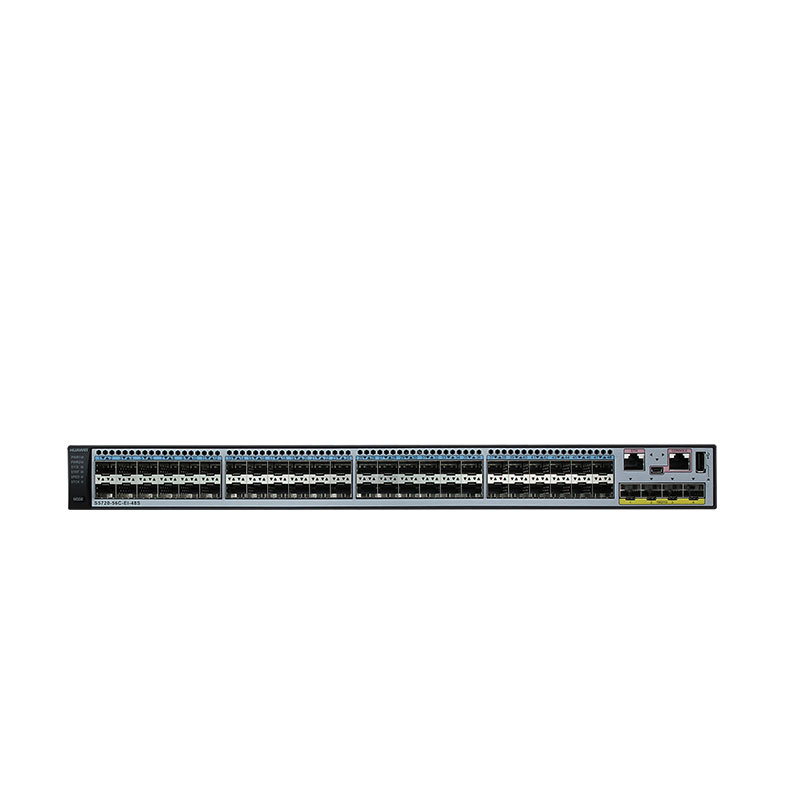The Huawei S5735 S48T4XE V2 is a next generation, high performance, and energy efficient switch designed for enterprise and service provider networks. This switch offers a robust set of features and capabilities, making it an ideal choice for various network deployment scenarios. Here is a concise overview of its key attributes and model specification parameters:
1. Model Name: Huawei S5735 S48T4XE V2
2. Form Factor: This switch is available in a 48 port model with 48 10/100/1000Base T Ethernet ports and 4 10GE SFP+ ports.
3. Performance: The switch supports high density 10GE uplinks, providing excellent performance for data centers and high speed access networks.
4. Routing Capabilities: It offers advanced routing capabilities, including support for IPv4 and IPv6, ensuring seamless integration with existing and future networks.
5. Security Features: The switch includes comprehensive security features such as access control lists (ACLs), MAC address binding, and port security to protect against unauthorized access and potential threats.
6. Energy Efficiency: Designed with energy saving technologies, the S5735 S48T4XE V2 reduces power consumption and lowers operational costs.
7. Management: It supports various management options, including SNMP, RMON, and CLI, making it easy to monitor and manage the switch.
8. Redundancy: The switch features redundant power supplies and supports link aggregation, ensuring high availability and reliability.
9. PoE Capability: It supports Power over Ethernet (PoE), which allows for the powering of devices such as IP cameras and VoIP phones directly through the network cable.
10. Quality of Service (QoS): Advanced QoS features prioritize network traffic, ensuring that critical applications receive the bandwidth they need for optimal performance.
The Huawei S5735 S48T4XE V2 is a versatile and powerful switch that meets the demands of modern networks, offering a balance of performance, security, and energy efficiency. Its robust feature set makes it suitable for a wide range of applications, from campus networks to data center environments.







